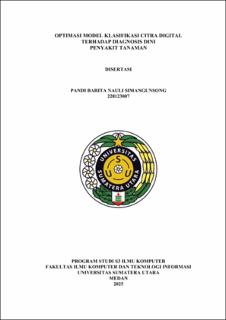| dc.description.abstract | This study proposes an improved DenseNet-SEGR model by integrating a novel Squeeze-and-Excitation (SE) block formulation to improve feature selection for tomato leaf disease classification such as color, texture, shape, spot pattern, leaf tissue. Unlike conventional approaches, the model replaces the standard Global Average Pooling (GAP) in the Squeeze mechanism with an integral-based formula, which enables more precise and continuous feature representation. This adaptation makes the model more sensitive to hard-to-detect disease patterns, thus providing better results compared to previous SE Blocks that only used the standard GAP method. SE Block dynamically recalibrates the importance of features across channels (color, texture, shape, spot pattern, leaf tissue), optimizing disease recognition. The model was trained using the PlantVillage dataset (12,246 images) and utilized augmentation techniques to improve generalization. Our method achieved 98.88% accuracy, significantly outperforming DenseNet-121, DenseNet-201, and MobileNetV2, while maintaining competitive computational efficiency. Statistical validation, confirmed the significance of our findings. These results demonstrate the potential of DenseNet-SEGR for real-time agricultural monitoring, enabling a scalable and efficient disease detection solution for precision agriculture. | en_US |


